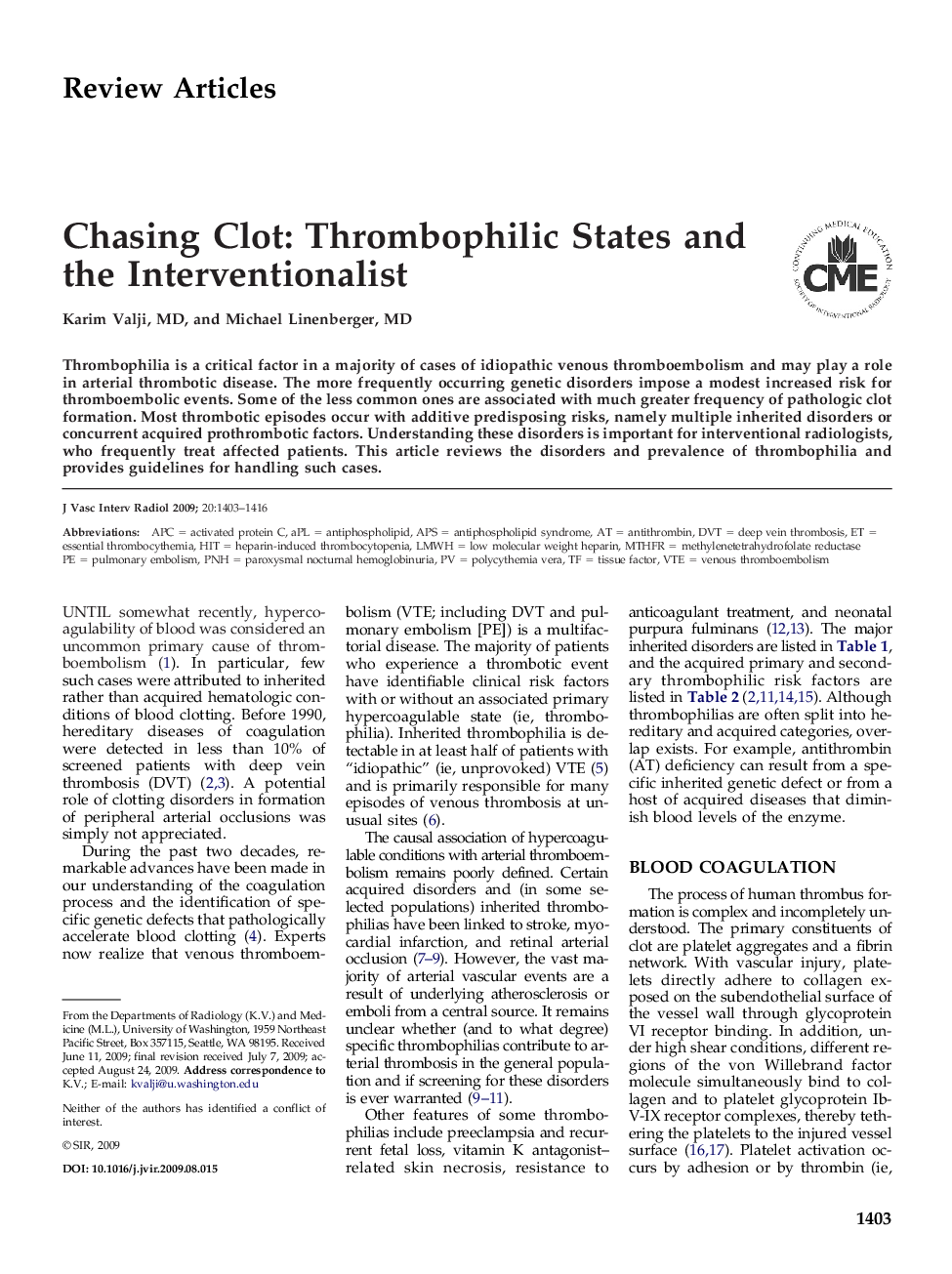| Article ID | Journal | Published Year | Pages | File Type |
|---|---|---|---|---|
| 4241675 | Journal of Vascular and Interventional Radiology | 2009 | 14 Pages |
Abstract
Thrombophilia is a critical factor in a majority of cases of idiopathic venous thromboembolism and may play a role in arterial thrombotic disease. The more frequently occurring genetic disorders impose a modest increased risk for thromboembolic events. Some of the less common ones are associated with much greater frequency of pathologic clot formation. Most thrombotic episodes occur with additive predisposing risks, namely multiple inherited disorders or concurrent acquired prothrombotic factors. Understanding these disorders is important for interventional radiologists, who frequently treat affected patients. This article reviews the disorders and prevalence of thrombophilia and provides guidelines for handling such cases.
Keywords
APLPNHAPCPolycythemia veraVTELMWHMTHFRAPsPulmonary embolismantithrombinHITVenous thromboembolismDeep vein thrombosisDVTEssential thrombocythemiaHeparin-induced thrombocytopeniaAntiphospholipid syndromeantiphospholipidTissue factorMethylenetetrahydrofolate reductaseparoxysmal nocturnal hemoglobinuriaLow molecular weight heparinActivated protein C
Related Topics
Health Sciences
Medicine and Dentistry
Radiology and Imaging
Authors
Karim MD, Michael MD,
